Wallpapers are an economical and convenient option for decorating bedroom walls. The wide variety of patterns and textures allows them to be used in any interior style, creating interesting combinations and unusual visual effects. This article discusses how to choose the right wallpaper for your bedroom.
Types of wallpapers for the bedroom, their advantages, and disadvantages
Paper wallpapers
Wallpapers made from regular glossy or matte paper are divided into single-layered simplex and double-layered duplex. The former is cheaper, while the latter is more durable and less likely to tear from mechanical impact.
The main disadvantage of paper wallpapers is their short lifespan. They quickly lose their aesthetic appearance due to moisture, dust, and sun fading. However, considering the low cost of such finishes, the interior can be completely updated every 2-3 years.
This is a simple and cost-effective option for cosmetic repairs in temporary housing, dormitories, rental apartments, and also with small children who sometimes love to draw on the walls. This type also includes photo wallpapers.
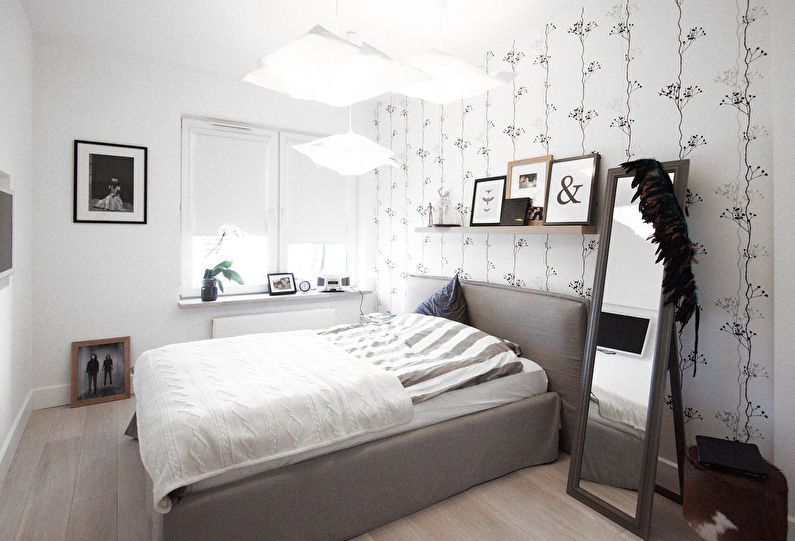
Vinyl wallpapers
PVC wallpapers consist of a paper or textile base and a plastic top layer, which can be smooth, embossed (silkscreen printing), foamed, glossy, matte, or a combination thereof.
The disadvantage of using PVC is that this material consists of synthetic resins and does not allow the walls to breathe (does not allow water vapor and air to pass through). For the first time after installation, such wallpapers may emit a plastic smell, which is a significant problem in the bedroom because the sleeping area should be well ventilated.
The positive aspects of PVC wallpapers include their high aesthetic value, durability, long service life, the ability to repaint, easy cleaning from dust with damp cloth, and good sound insulation properties.
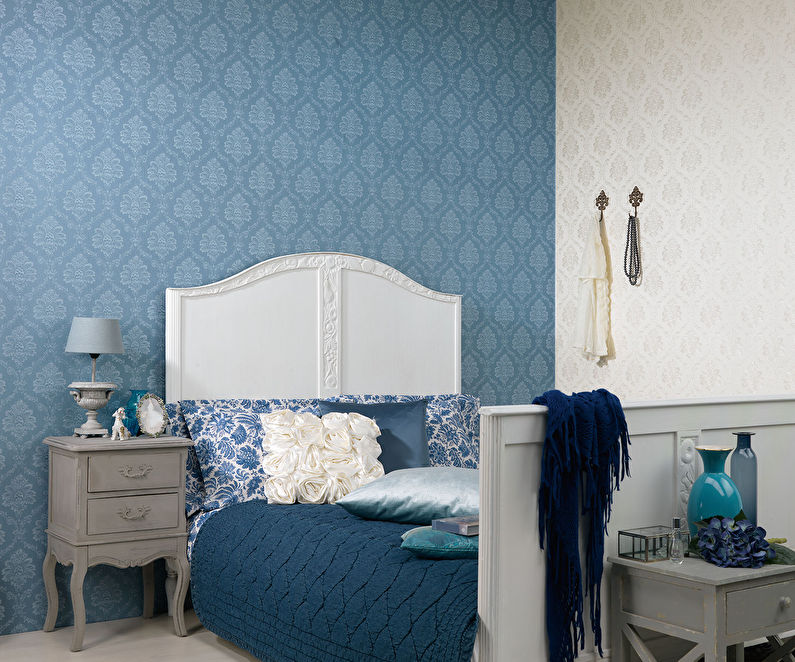
Non-woven wallpapers
These are flexible double-layered sheets made of intertwined cellulose fibers. Thanks to the micro-porous texture, such wallpapers are ecologically safe and adhere well to any surface. The renovation process is simplified because the glue is applied directly to the wall. Textured non-woven wallpapers without vinyl coating are suitable for painting.
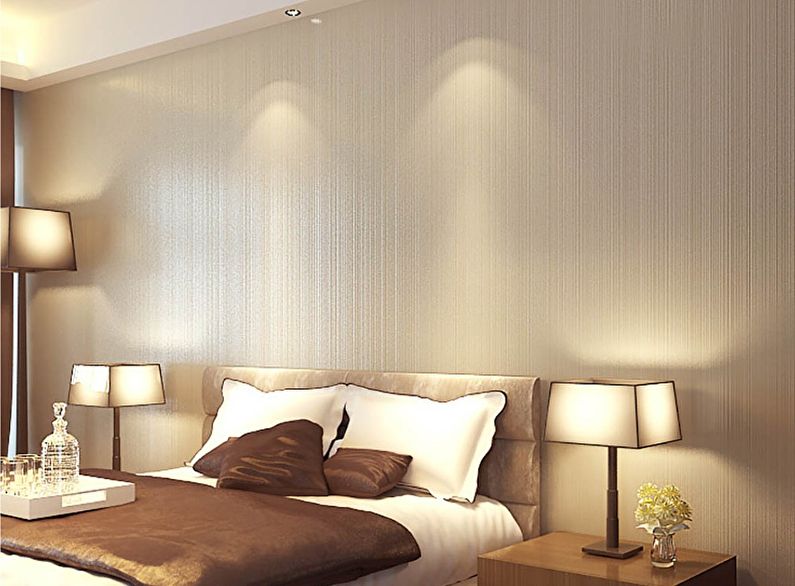
Textile wallpapers
Covering walls with fabric is an interesting solution for the bedroom, but it is worth considering that the walls will need to be vacuumed every month or two. Dust accumulates particularly quickly on fluffy synthetics. Modern textile wallpapers usually have a dense base, which makes them easier to install, but working with them is still quite challenging. Excess adhesive, absorbed into the fabric, can permanently leave unsightly stains on it. The advantage of such a finish option can be considered its luxurious appearance and good sound insulation.

Glass fiber wallpaper
Semi-transparent, very thin but rigid, wallpapers made of glass fiber threads are easily attached to walls and can serve well for up to 30 years. They can be painted up to 10 times, which allows for quick updating of the design. The huge advantage of this type of finish is the ecological safety of the glass fabric, since only natural materials such as quartz sand, clay, soda and silicates are used in its production.
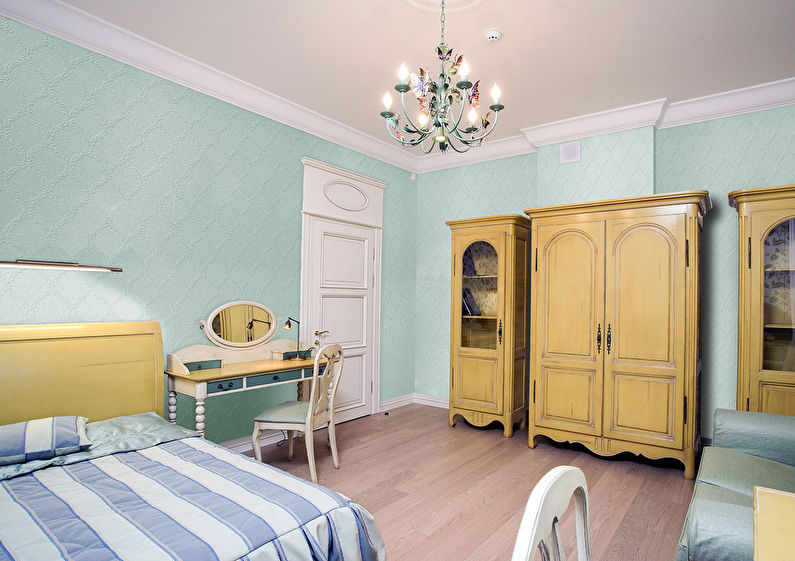
Wallpaper for the bedroom depending on the style
To create a harmonious interior, the wall decor should correspond to the chosen design direction. It is best to choose wallpapers that match in texture and color with the furniture, textiles, windows, and doors.
Modern style
Smooth, monochromatic wallpapers will work well for a modern-style bedroom. Light and glossy wallpapers will visually expand the room, while matte wallpapers will add coziness. The modern style also allows for neat monochromatic patterns, graphics, and abstract designs – but only as an accent, not as a full coverage.
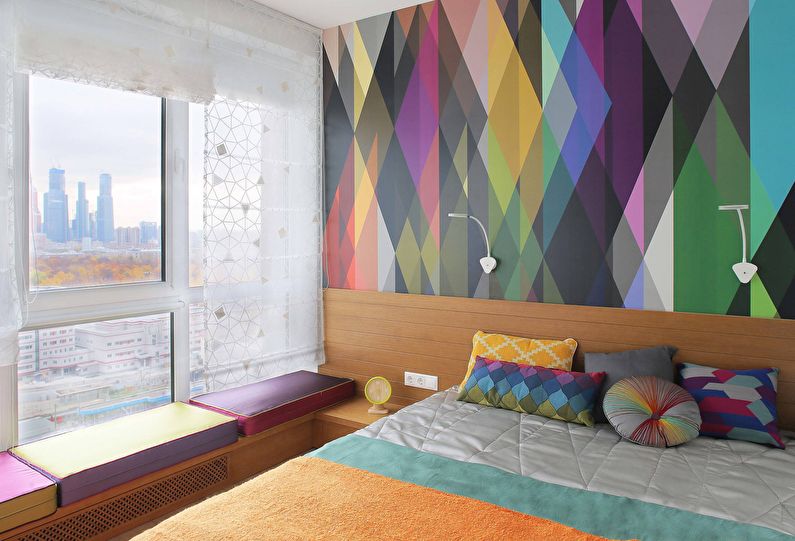
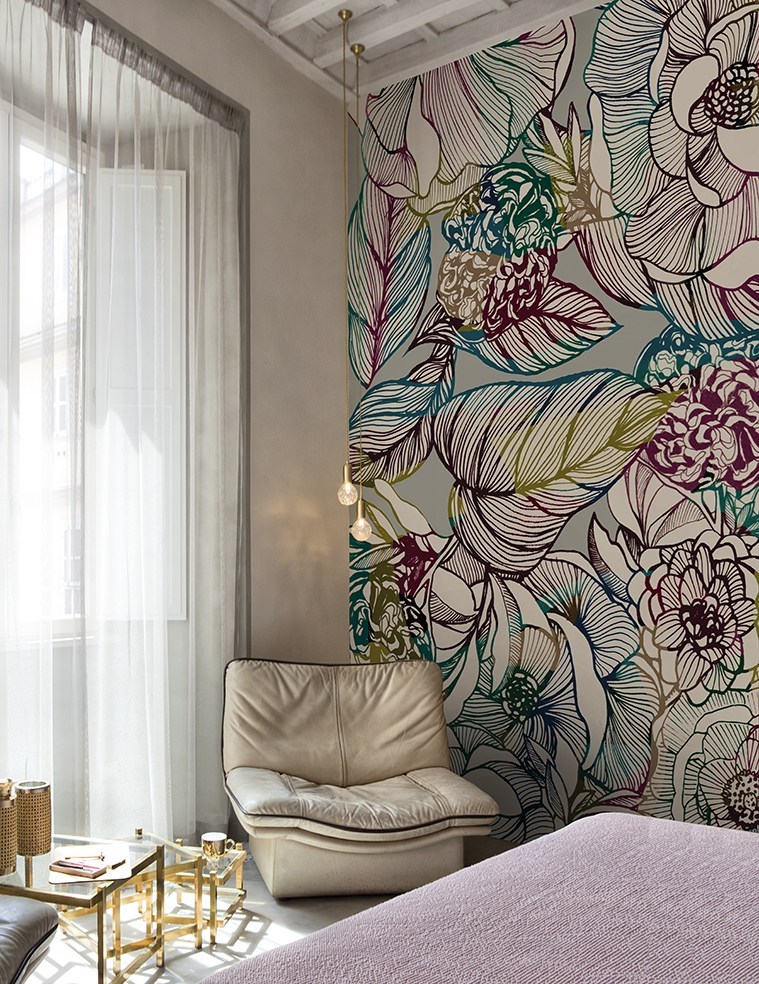
Classical style
This style combines the monumentality of ancient times with the exquisite luxury of the Renaissance. A real royal bedroom can be framed with wallpaper in warm shades of white (cream, ivory, light beige) with golden or silver plant ornaments, relief under plaster moldings, or soft leather.
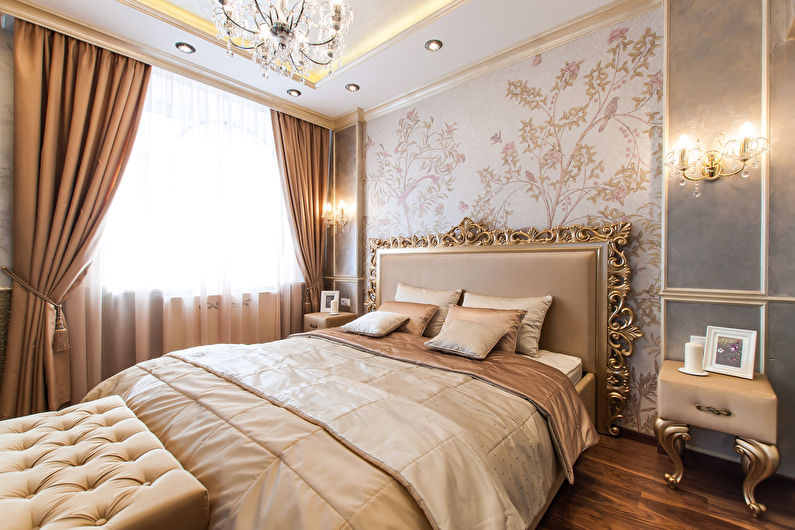
Provence Style
One could describe the romantic atmosphere of the south of France by highlighting the pastel tones present, including light gray, pink, mint, lilac, and creamy colors, as well as the use of small floral prints. To prevent a monotonous appearance, experts suggest alternating between patterned wallpaper and plain colored sections, as well as ensuring a balanced selection of textiles.
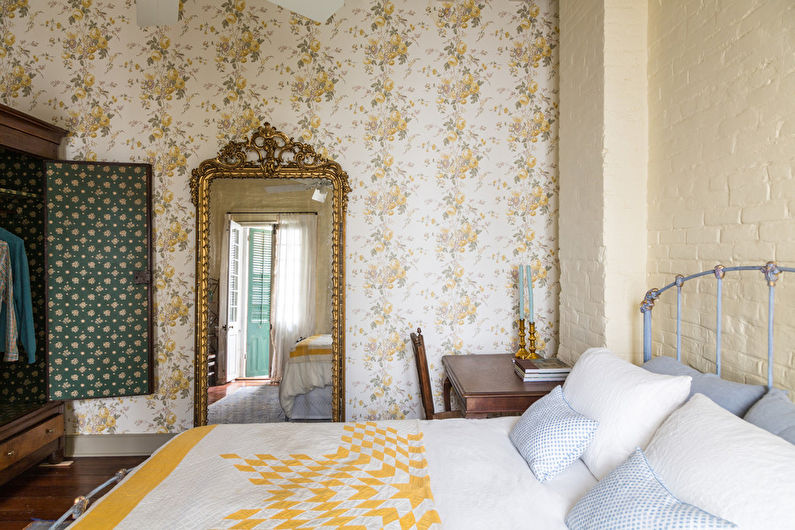
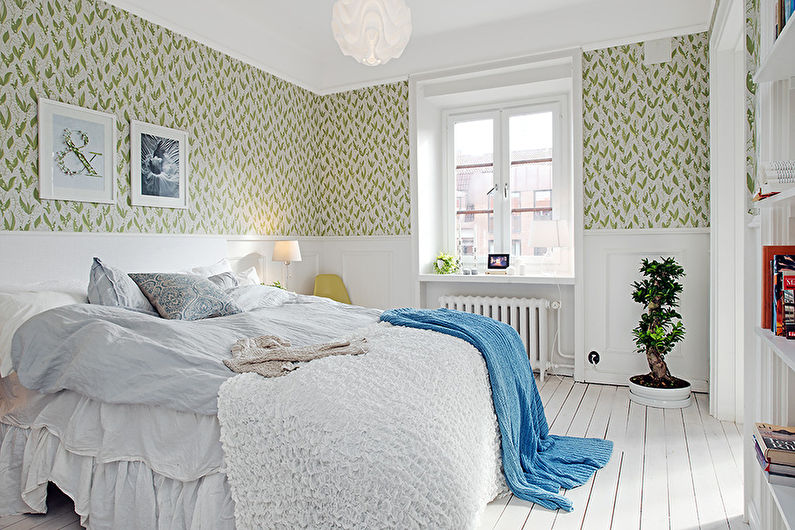
To recreate the icy freshness of northern Europe, natural winter shades such as snow-white, shimmering silver, translucent blue, light gray, and light green are recommended. To make the bedroom cozier, wallpaper with a texture resembling sun-bleached linen or light untreated boards with a cold shade can be used.

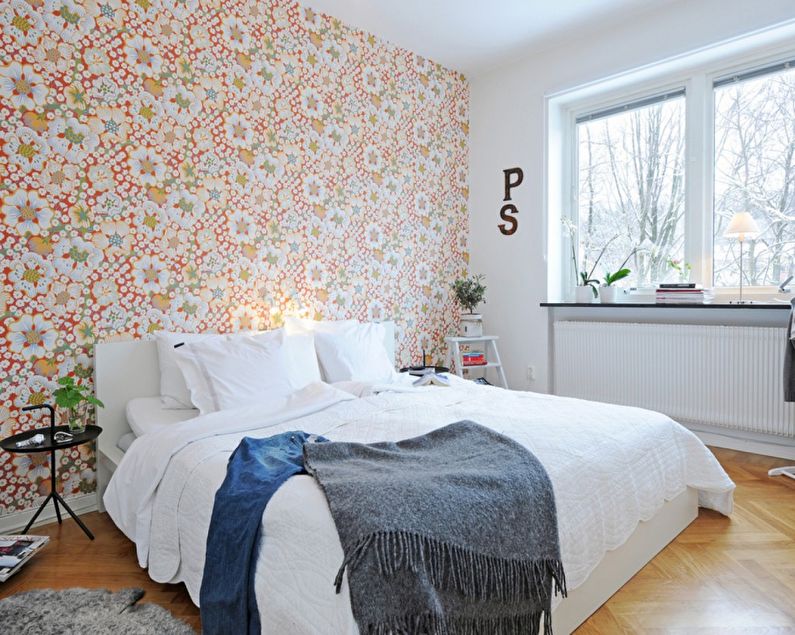
Japanese style
To create a bedroom interior that reminds one of the Land of the Rising Sun, you can use bamboo wallpapers, wallpapers with hieroglyphs, blooming sakura, bamboo leaves, fans, as well as photo wallpapers. The color palette for the Japanese style is quite broad, ranging from black-and-white, gray, wooden, straw tones to golden, bright pink, and red.
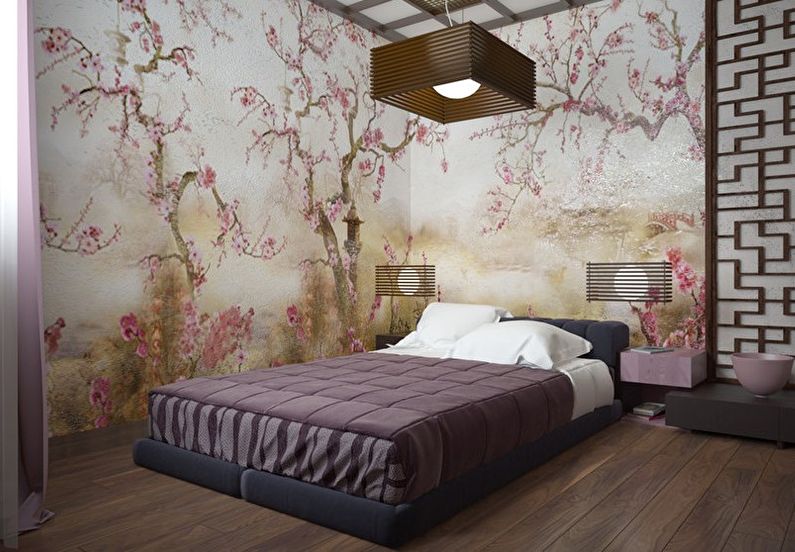
Art Deco
To achieve this style, you can use wallpapers with abstract and botanical patterns in fairly saturated yet calm colors. Colors such as grey with a hint of other shades, black, white, burgundy, beige, and blue are commonly used. To visually expand the space in Art Deco, holographic pictures and optical illusions can be applied.
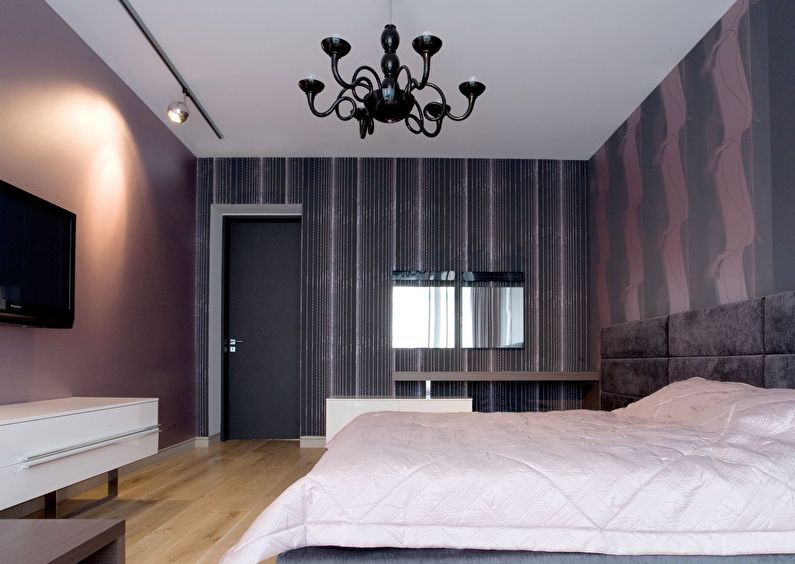
Choosing wallpaper color for a bedroom
When choosing wallpaper for a bedroom, it is essential to consider the impact of different colors on human psychology. Active colors such as orange and red are better left for the kitchen or dining room. Yellow, sage, and peach can make the northern side of the room feel warmer. To slightly cool down a southern bedroom, consider decorating the walls in green-blue shades. You can use monochromatic colors such as white, gray, and beige without any restrictions. However, you should be cautious when using black, dark purple, and chocolate colors as they absorb light, reduce the sense of space, and can give the room a dungeon-like appearance.
White wallpaper
White wallpaper in a bedroom is a proven classic. Any furniture, bright or pastel patterns, and other decor will always look appropriate against a light background. It will emphasize the beauty of paintings, photographs, and other decorations.
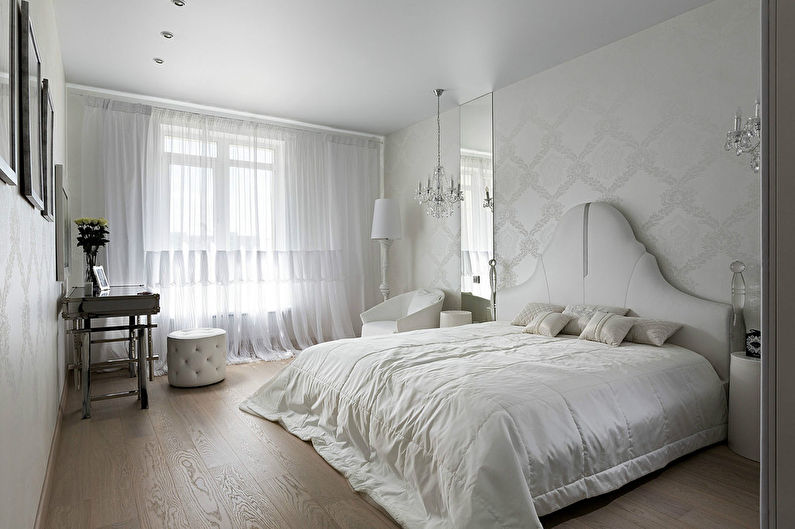
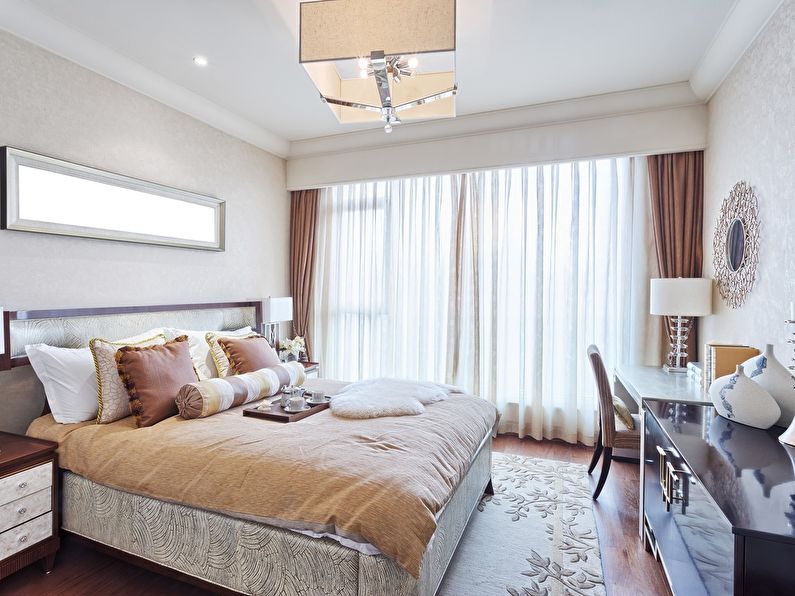
Pastel wallpaper
Wallpaper in soft shades of pink, blue, green, yellow, beige, and lavender is the perfect solution for a romantic bedroom. Such decor will be appreciated by all lovers of light, airy interiors.

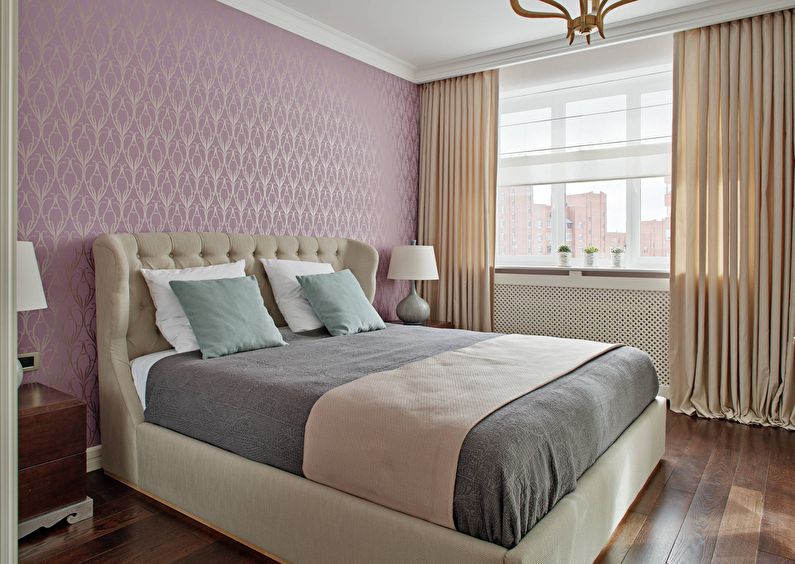
Grey wallpaper
Neutral grey wallpaper is an optimal solution for a bedroom in the styles of hi-tech, modern, minimalism, and loft. When combined with black or dark blue furniture and strict lines, it creates a functional masculine interior. White gloss and silver curls are an option for an elegant lady, while bright yellow, pink, and green accents on a gray background are suitable for a couple’s bedroom.
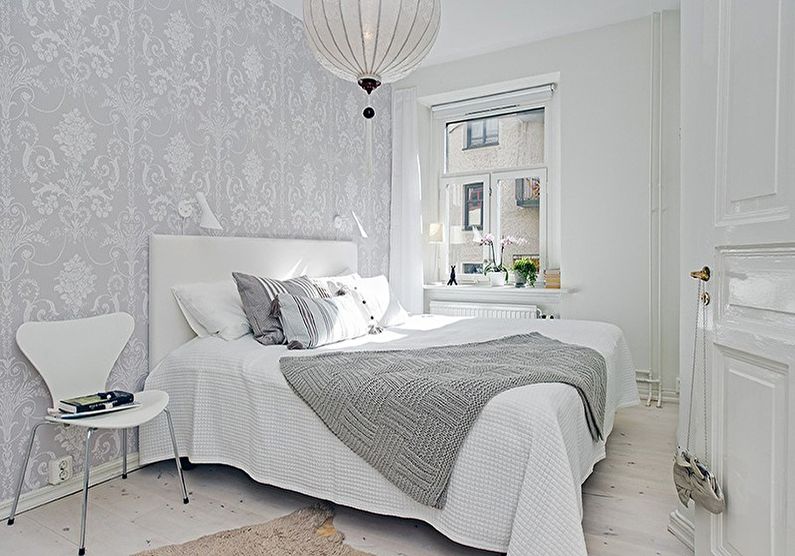
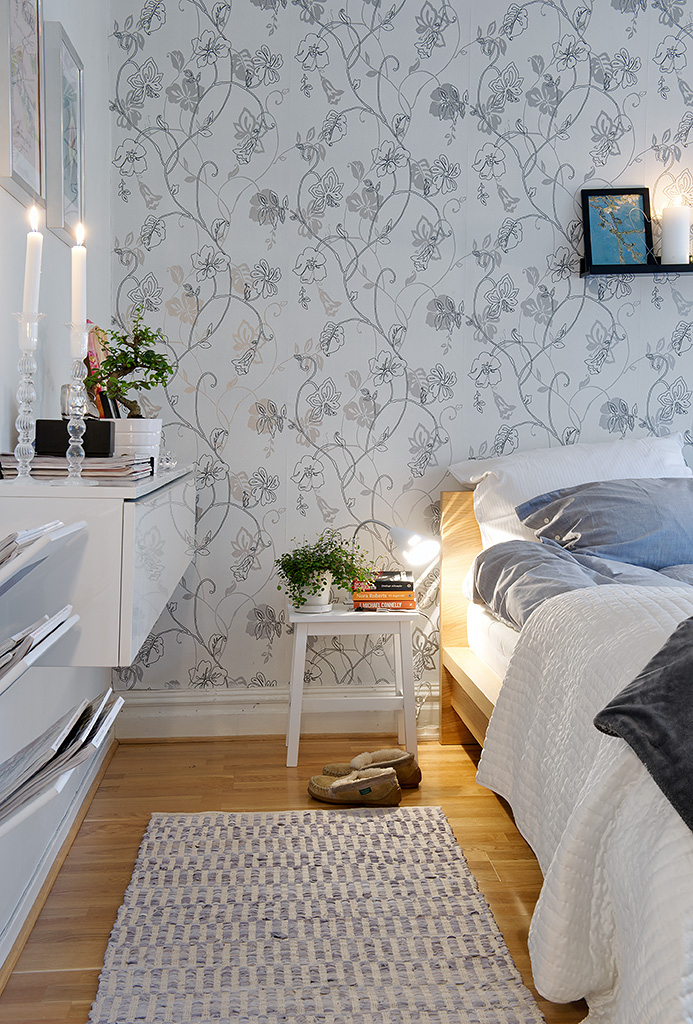
Blue wallpaper
Shades of the sky and water have a calming effect on people, making them an excellent choice for a bedroom. You can combine blue wallpaper with white, gray, beige, purple, or dark brown. You can also complement it with photo wallpaper.
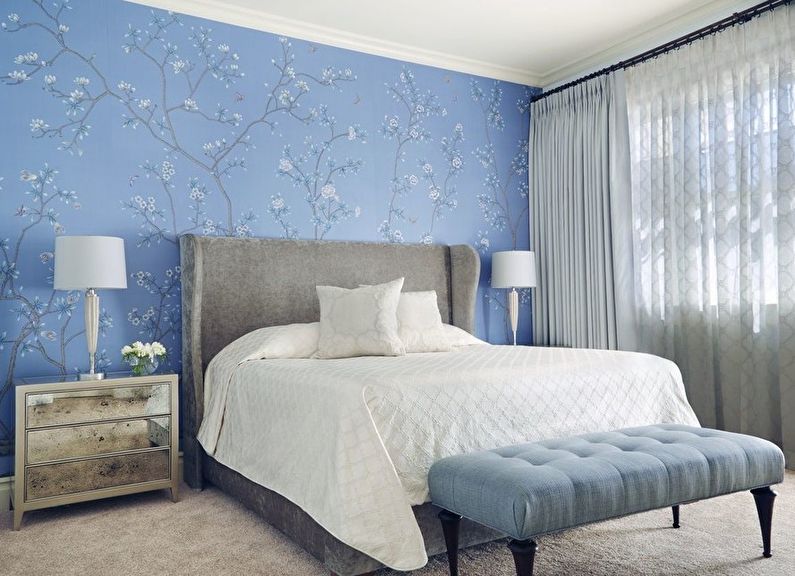
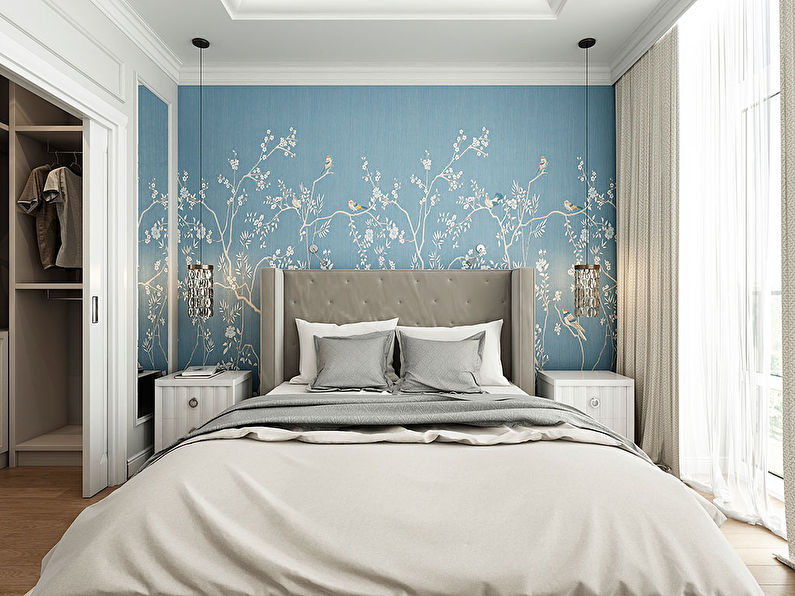
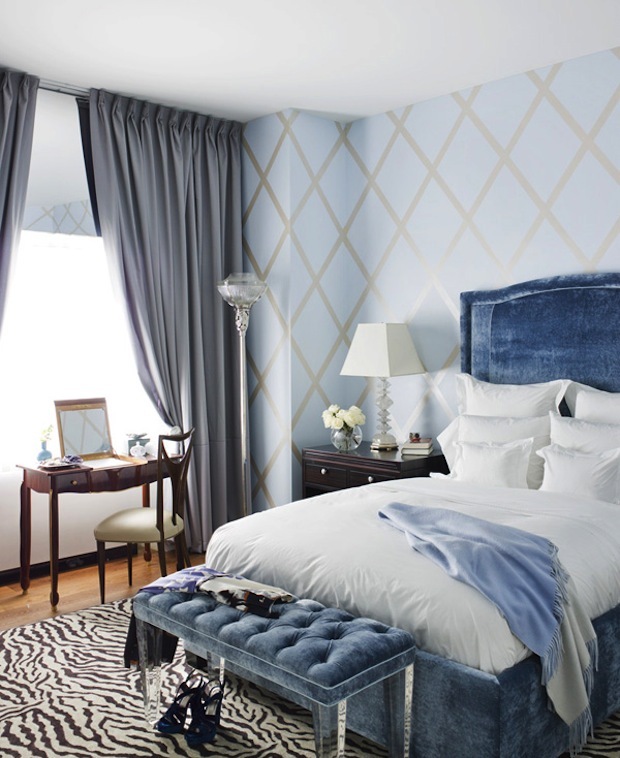
Combining wallpaper in a bedroom
Combining patterned and solid color wallpapers with similar color schemes allows you to diversify your interior and achieve certain visual effects. Properly decorated walls can make a bedroom interesting and cozy. There are several ways to combine wallpaper – vertical, horizontal, geometric, as well as inserts and niches.
Vertical
This can be alternating stripes from floor to ceiling – light and dark, matte and glossy, printed and solid color. Sometimes different decor of individual walls or partial partitions can be seen. Vertical accents visually make the room higher.
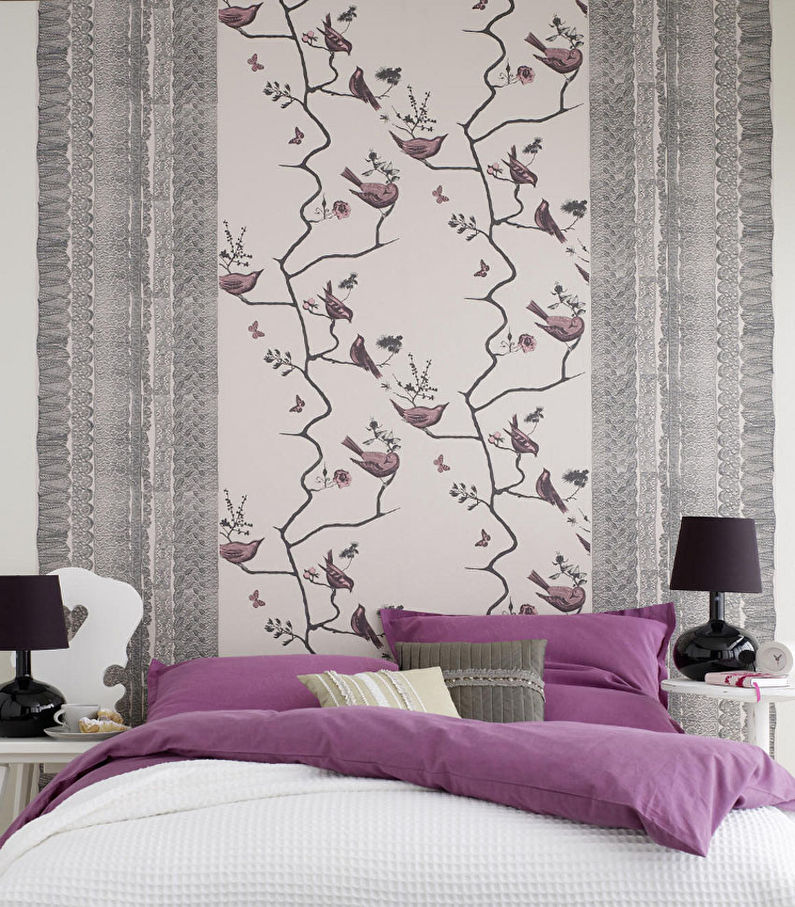
Horizontal
Using this combination of wallpapers, you can create beautiful borders and visually widen walls. Contrasting and horizontal lines are best used to enlarge narrow areas.

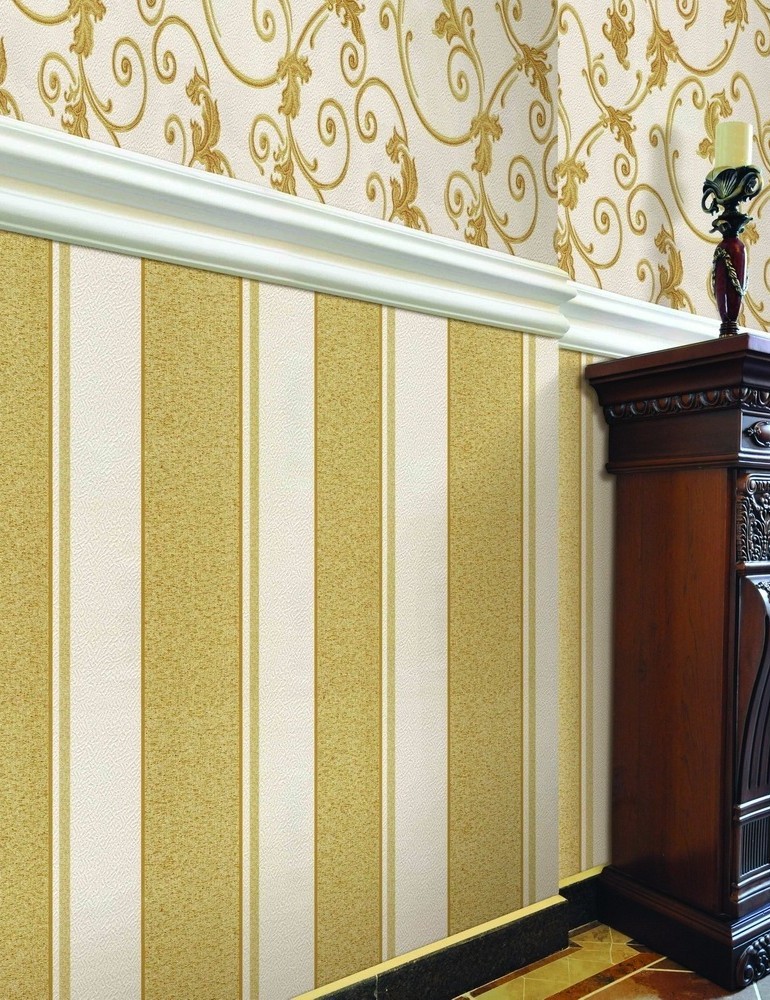
Geometric
Wallpapering a bedroom with wallpapers arranged at broken angles is an unusual way to create an exclusive interior. You can also use the technique of applique, attaching paper fragments you like to the main decoration.
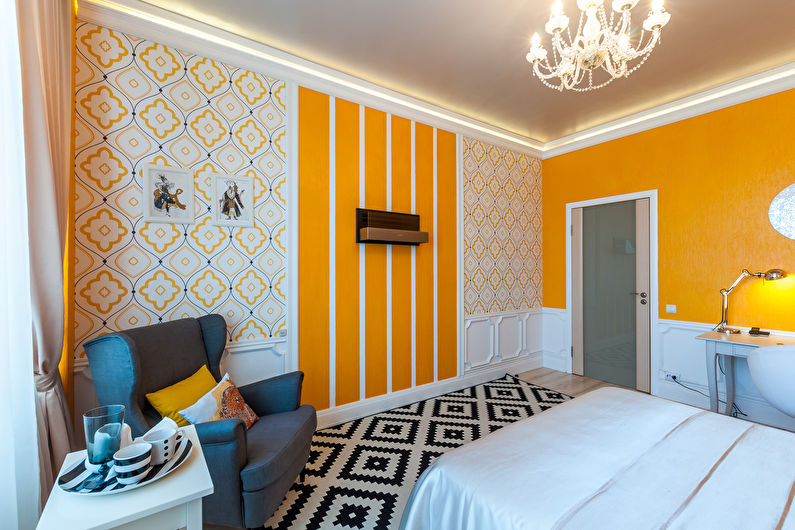
Insert
You can create an insert, which is usually a contrasting fragment of any shape separated by an improvised frame. The frame can be made of plaster, polyurethane, metal, wood, or simply drawn.
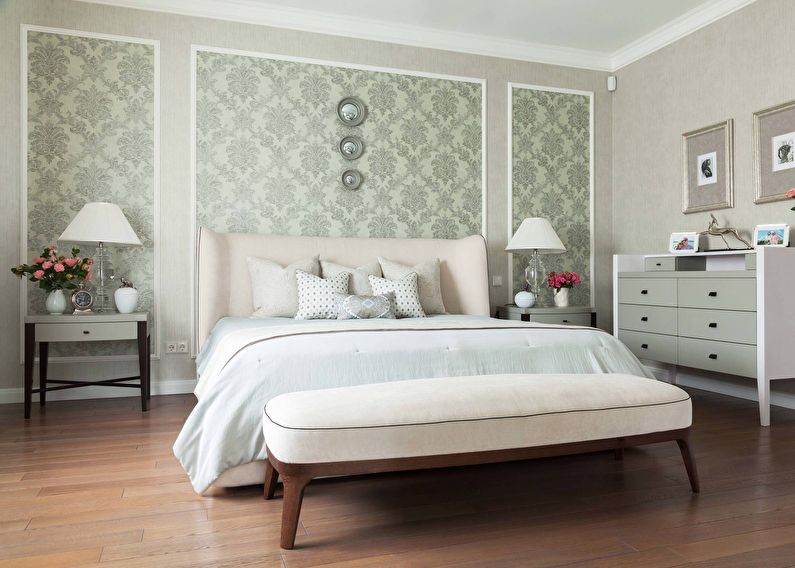
Niche
You can easily emphasize the difference between a wall and a recess by using different colors and textures for each. In a niche, you can apply photo wallpaper, imitation of brickwork, patterned glossy or solid color matte inserts.

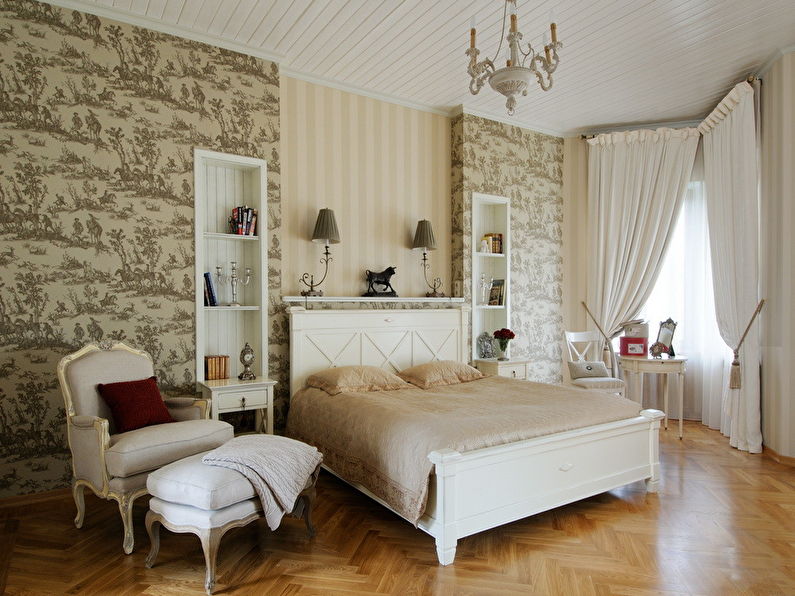
Wallpaper for a small bedroom
The problem that is common for most apartments is their small size. However, a small bedroom size is more of a benefit than a disadvantage: it saves finishing materials, simplifies repairs, and creates a more romantic atmosphere. The main rule is not to overload the interior with large elements and saturated colors.
For a bedroom in a Khrushchev-era apartment, it is better to choose light, pastel wallpapers with a small, inconspicuous pattern and light-reflecting details. Fully glossy wallpaper will reveal all the irregularities of the walls, but a combination of a matte background and mirror patterns, on the contrary, will hide them.

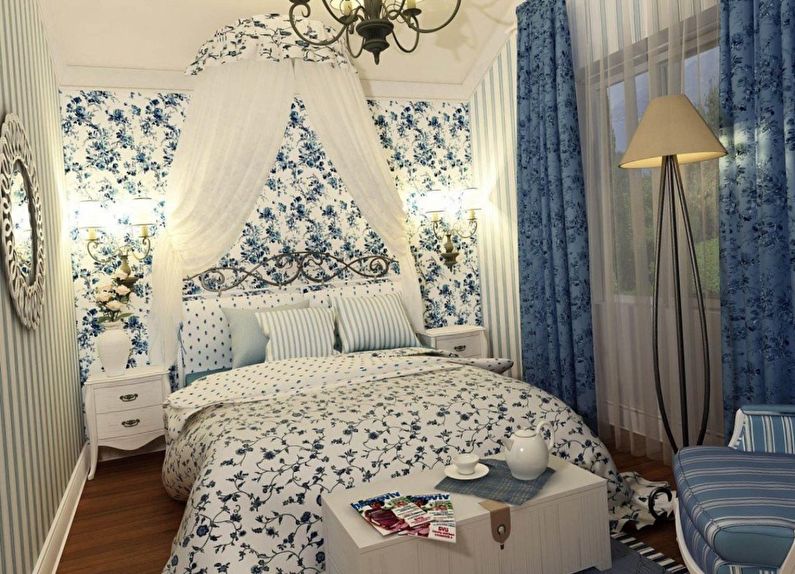
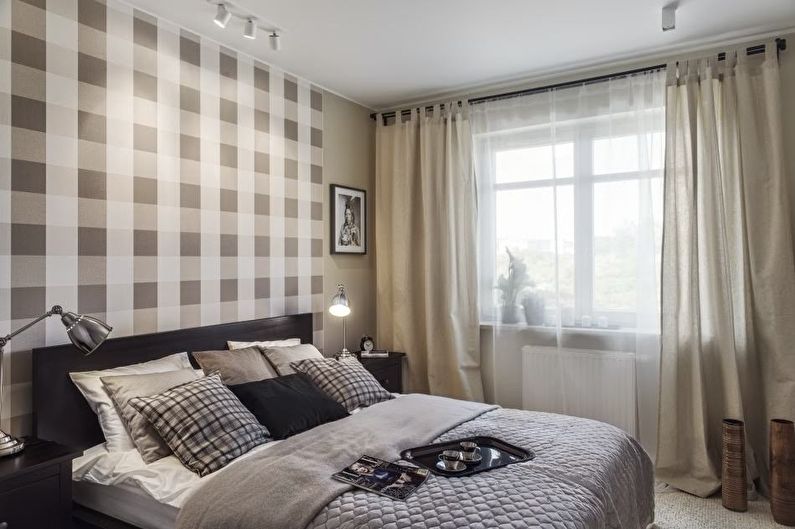
Wallpaper for a bedroom – photos
In our photo gallery, you will find vivid examples of how different types of wallpapers can look in a bedroom interior. Here you can see solid color options, striped, with geometric patterns, botanical ornament, photo wallpapers, and various other combinations. Get inspired!
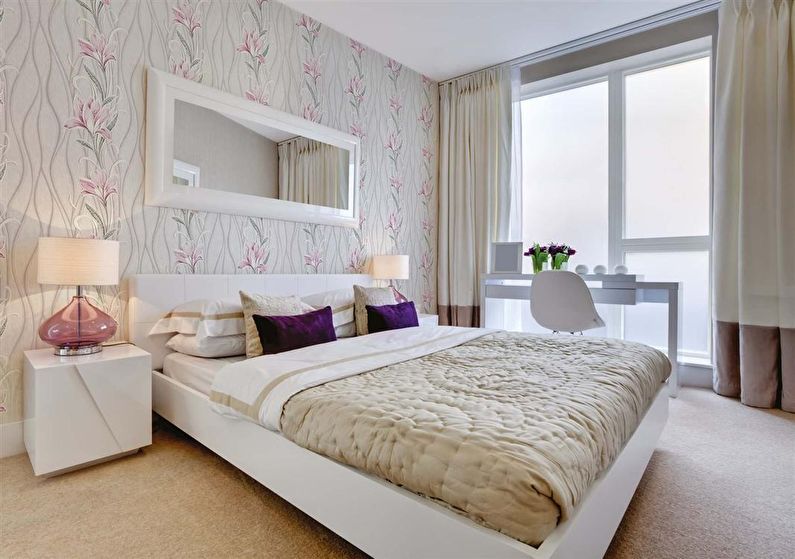
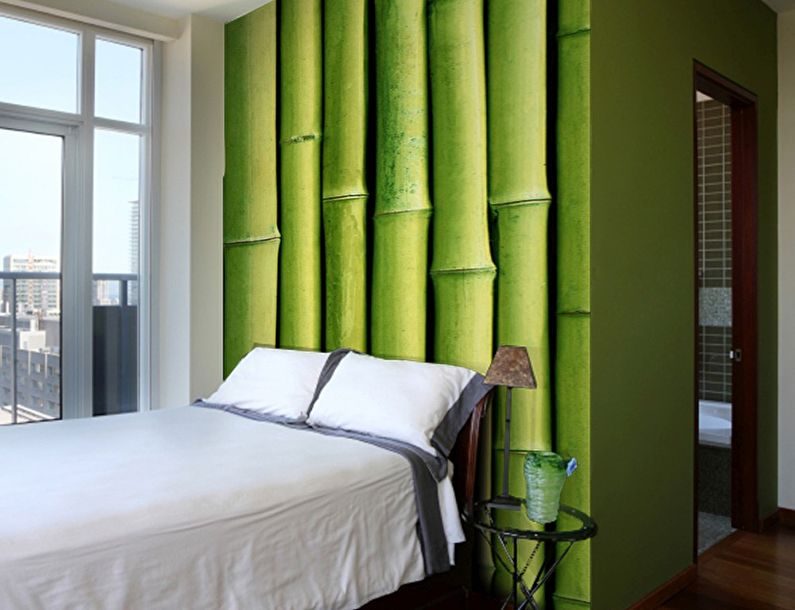

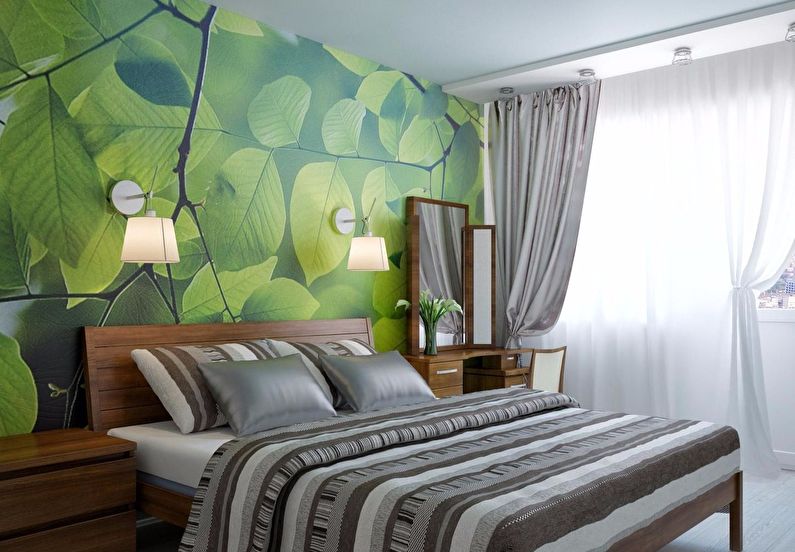
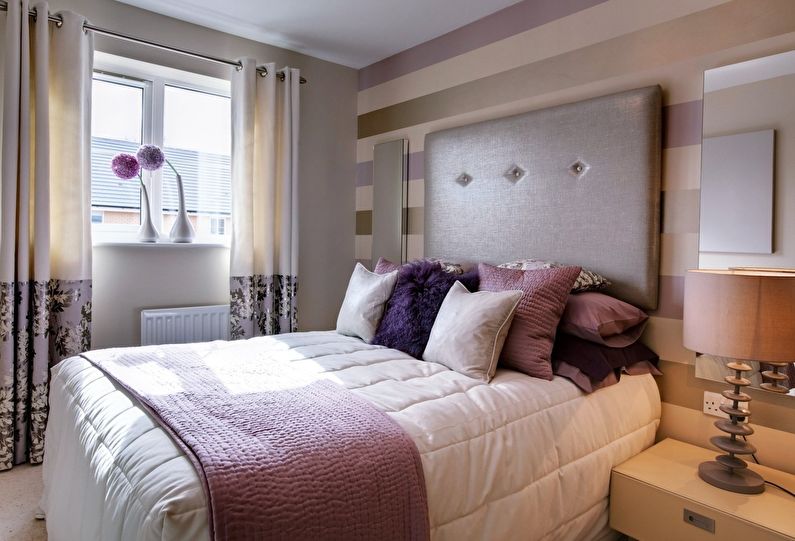
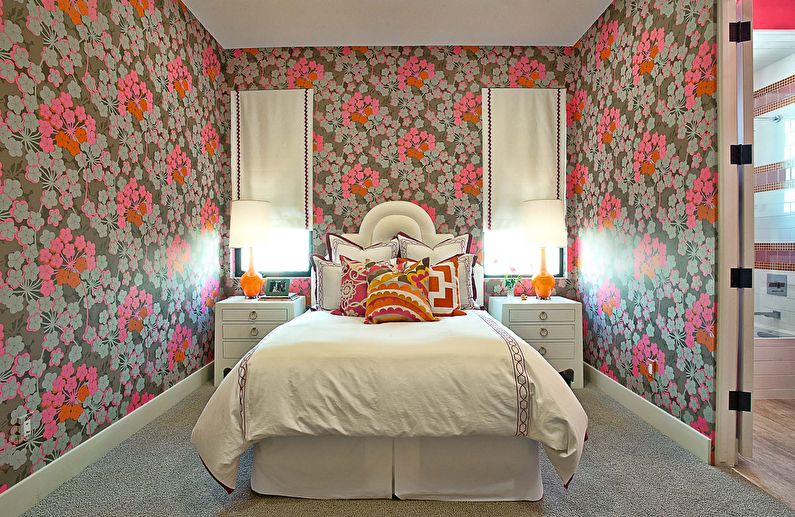

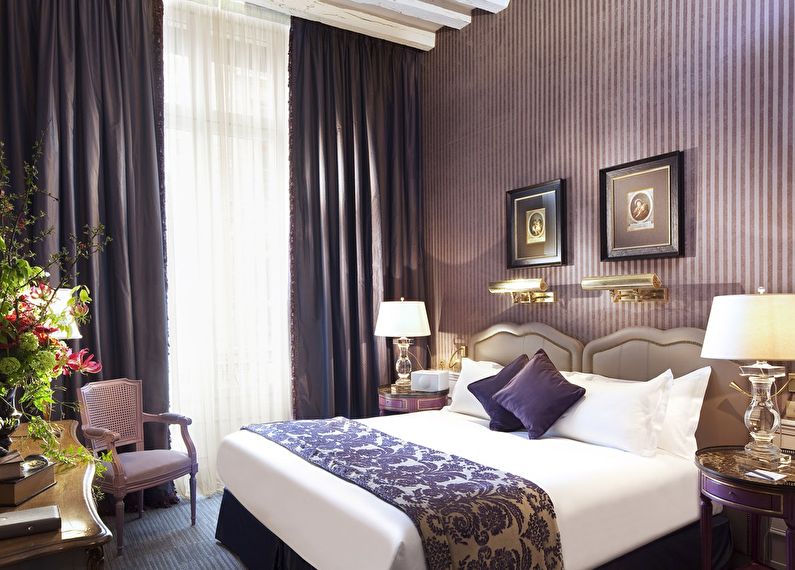
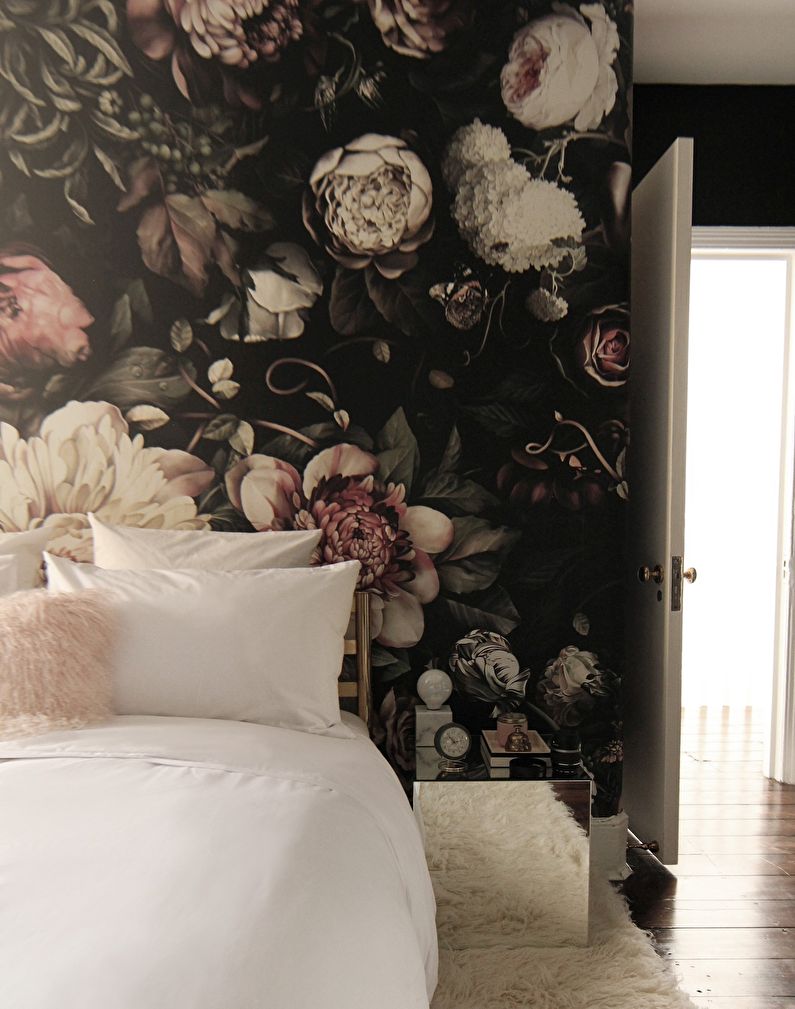
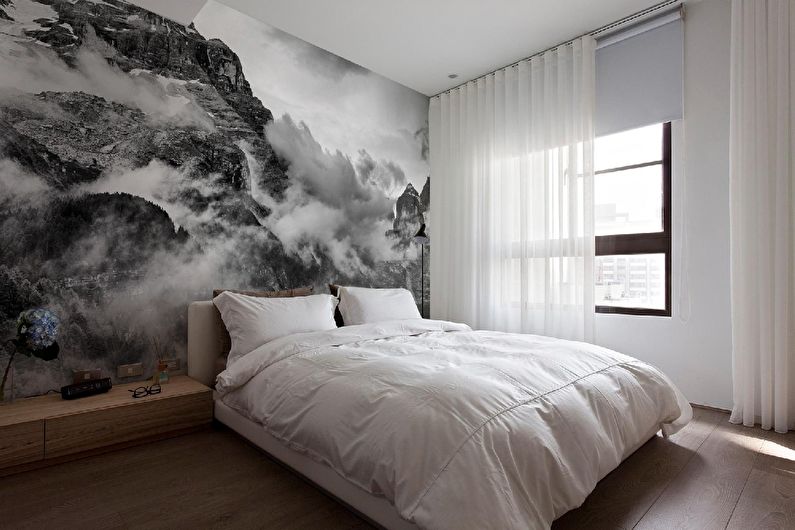
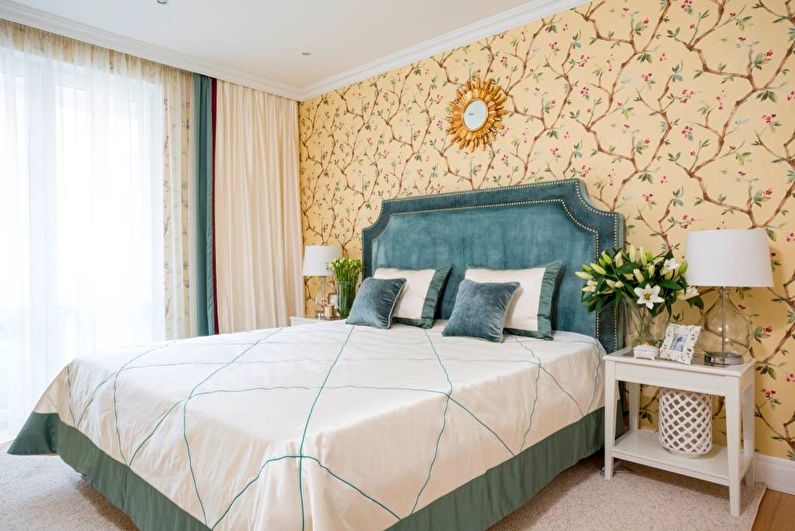
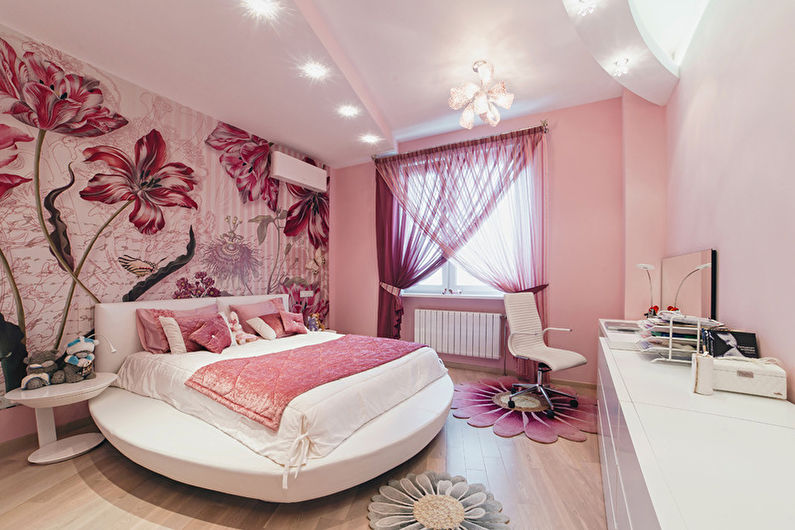
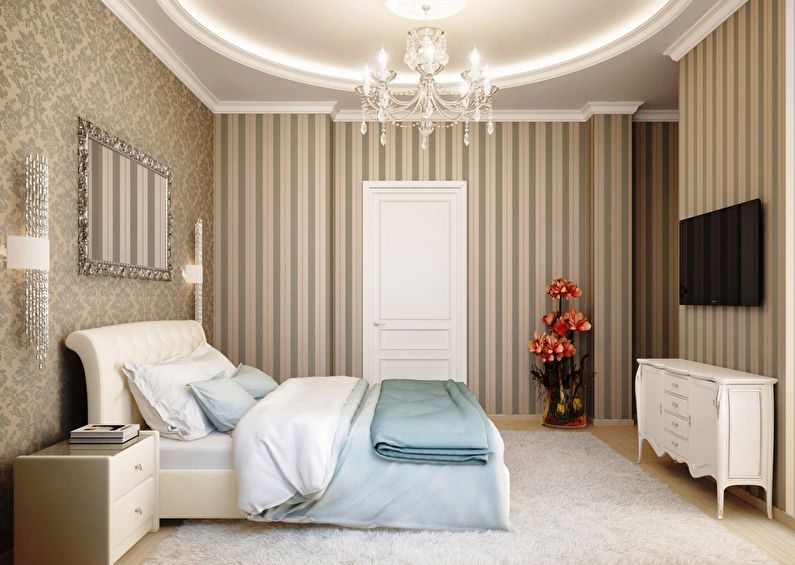

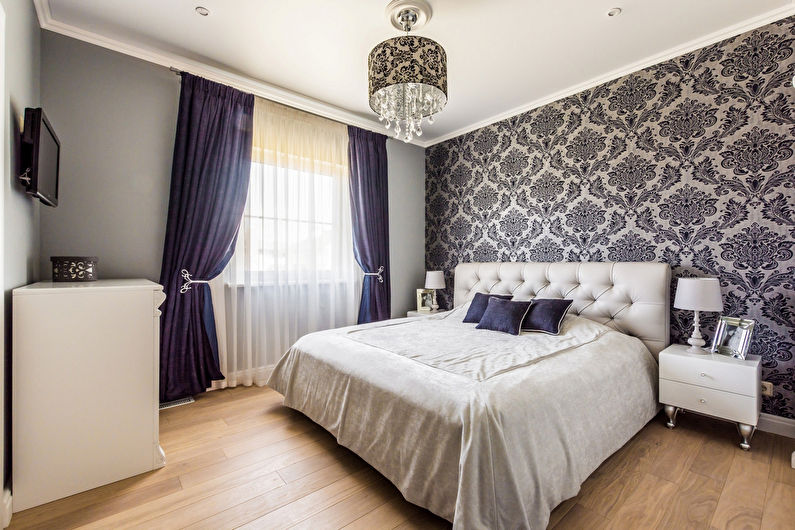
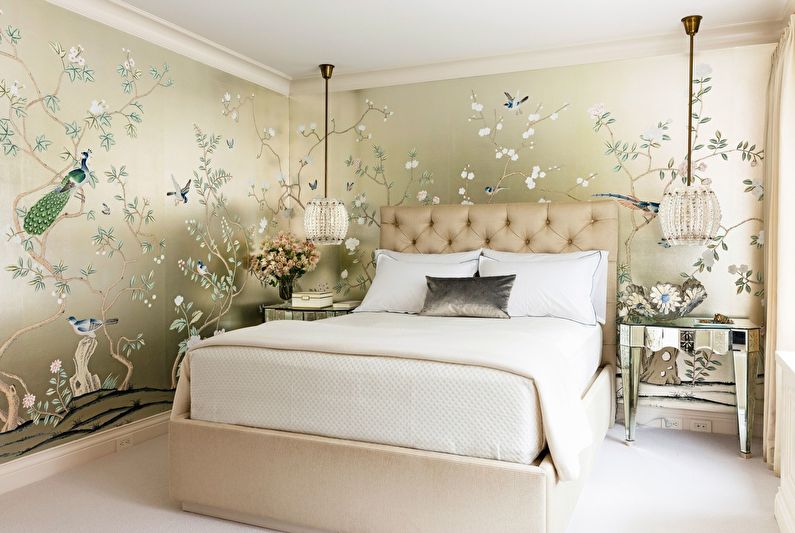
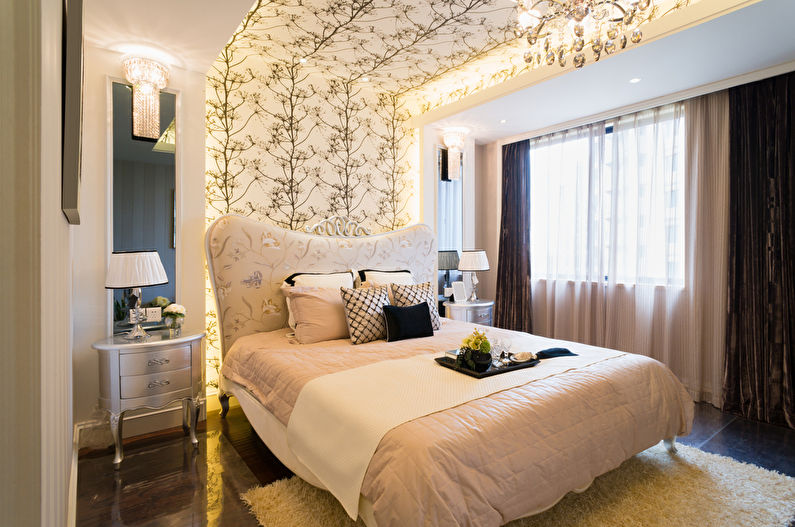
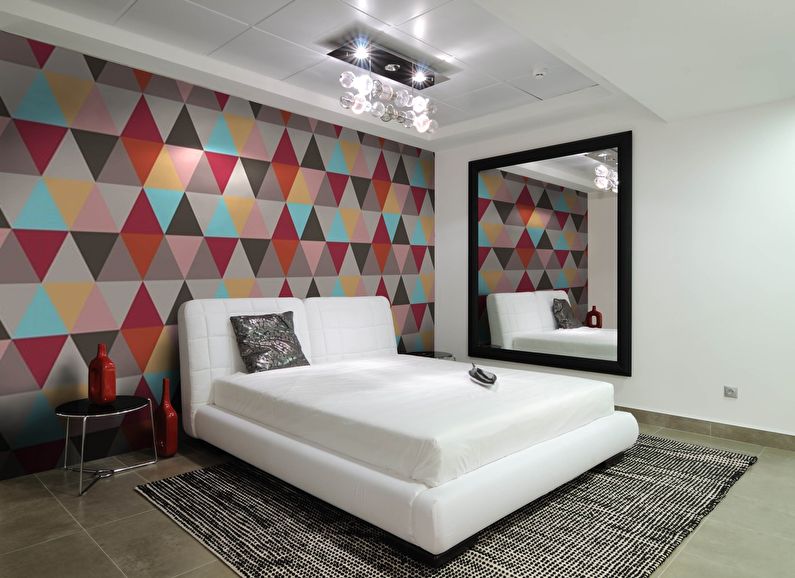
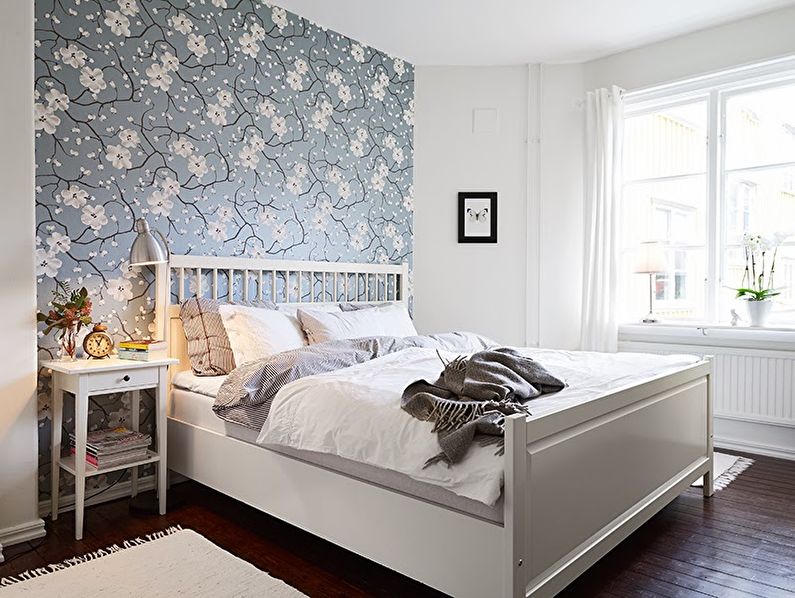
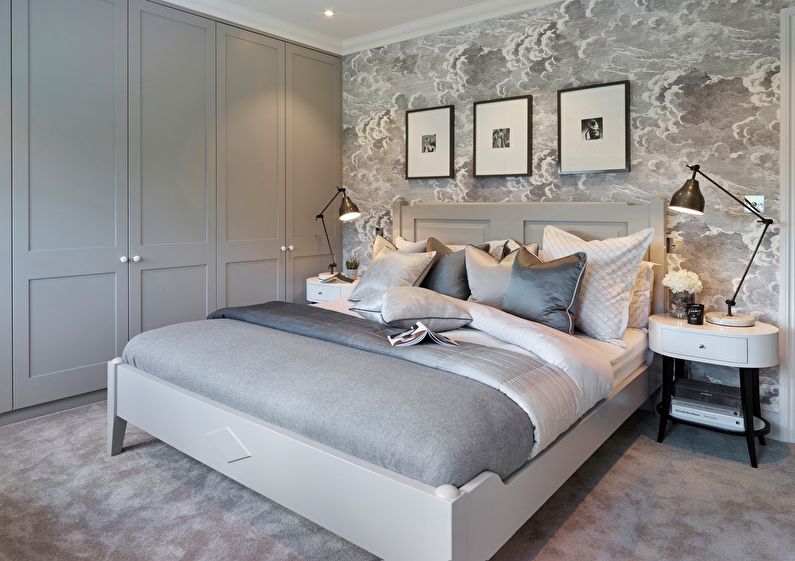
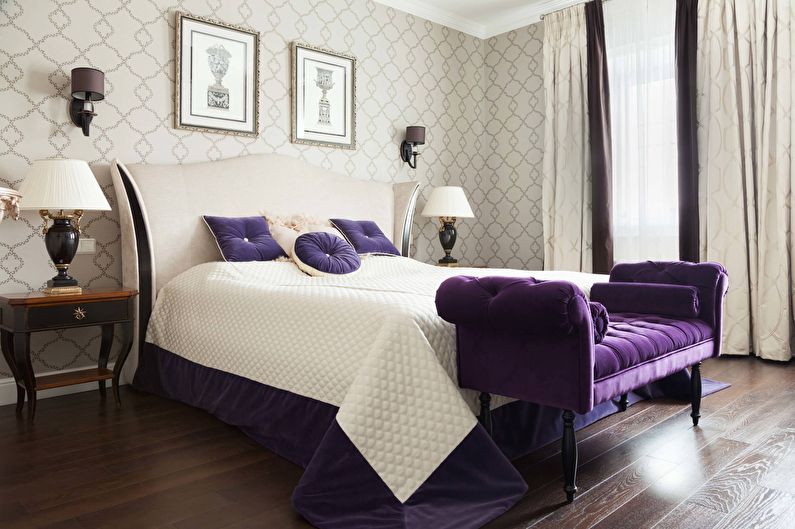


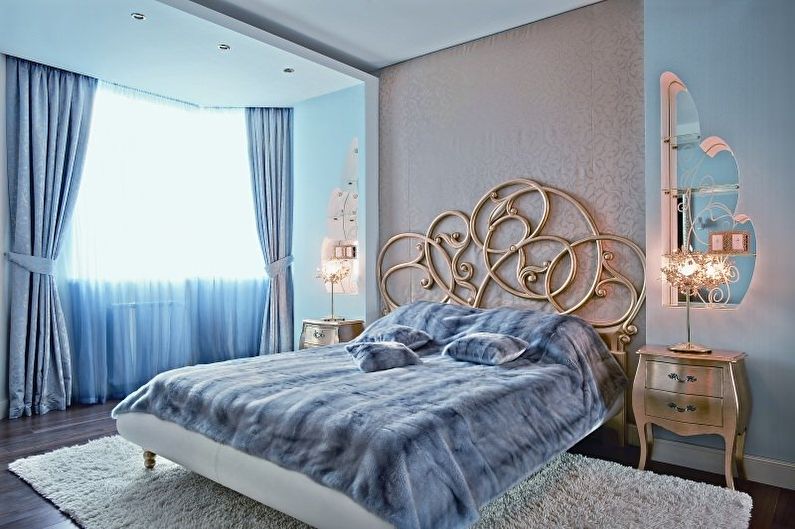

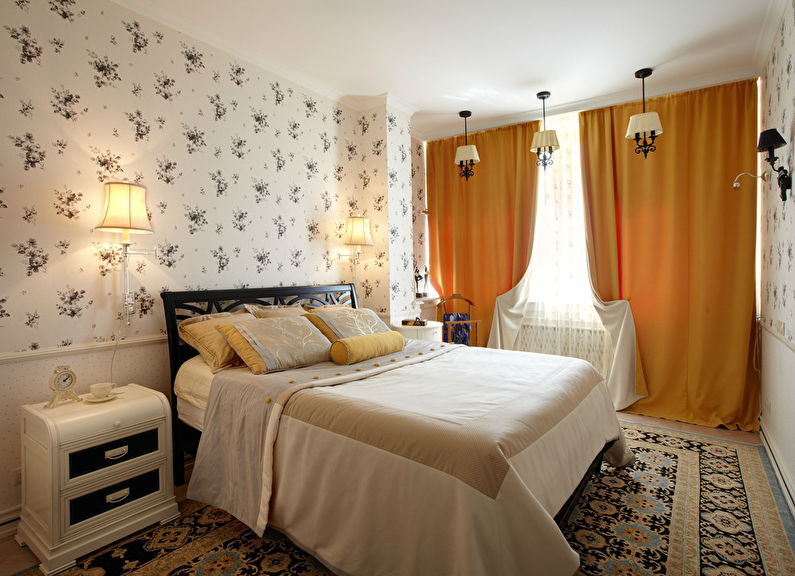
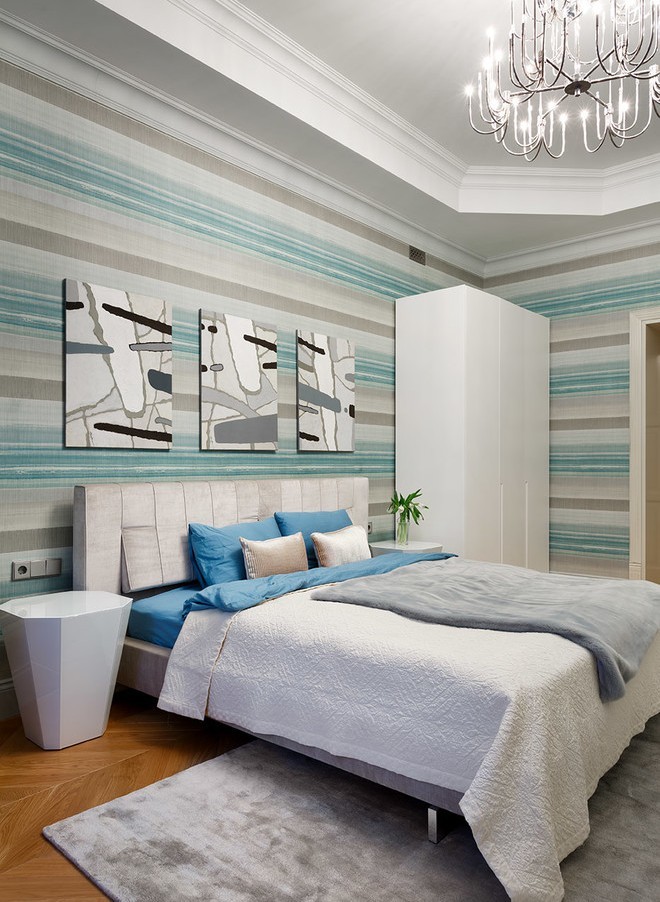
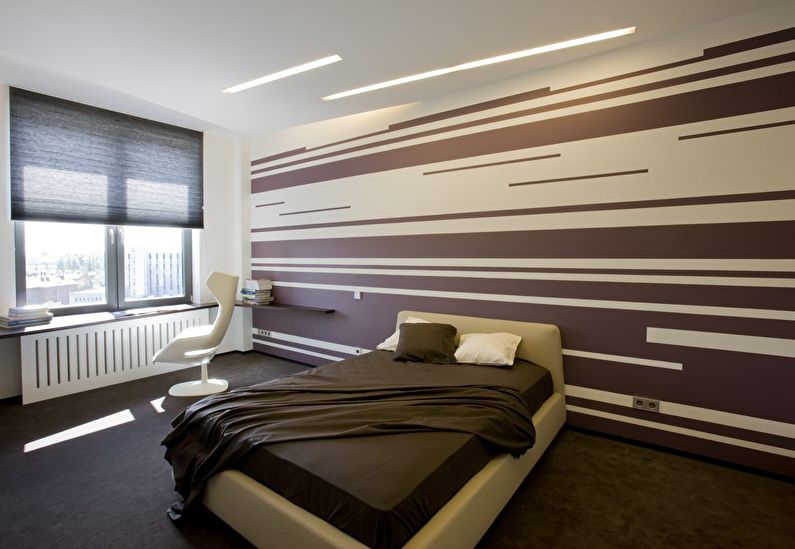
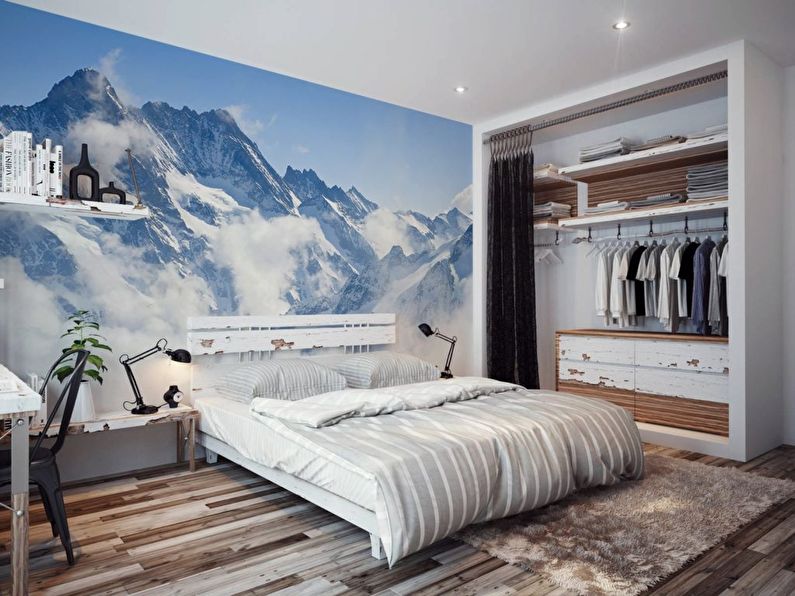
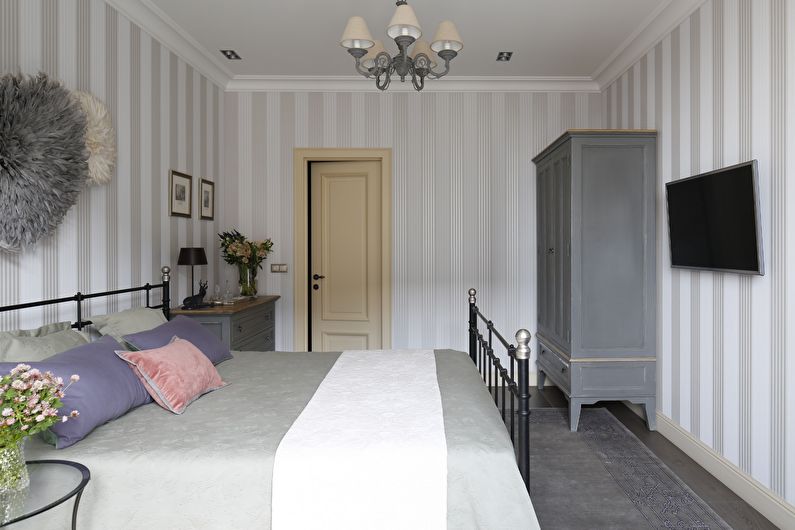

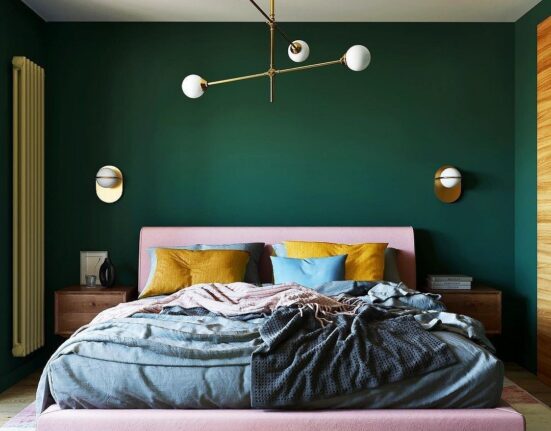

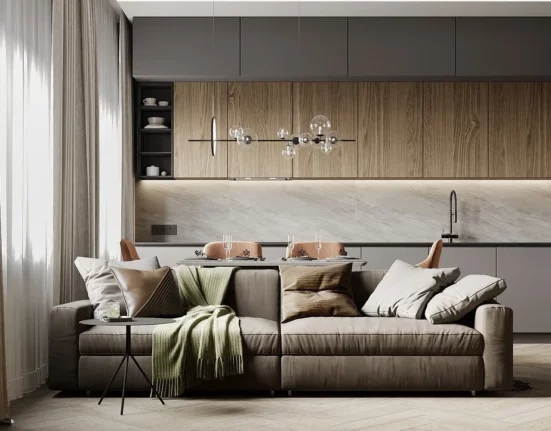

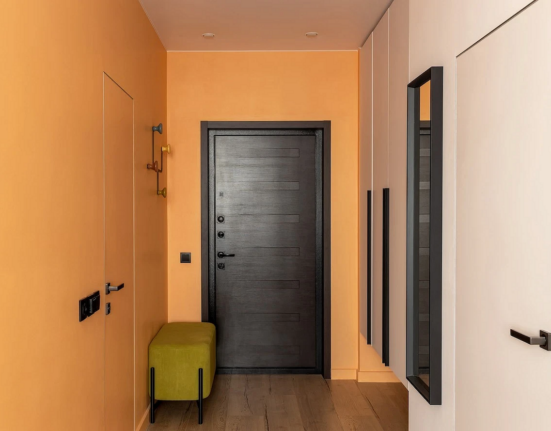
Leave feedback about this